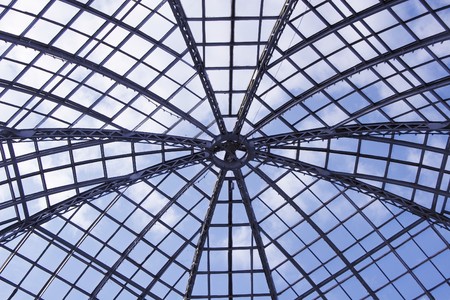1. Introduction: Choosing the Best Metal for Your Patio Furniture
Imagine stepping into your backyard on a sun-drenched afternoon, ready to unwind or entertain friends and family. The right patio furniture can transform this outdoor space into a true extension of your home—a place for laughter, relaxation, and memorable gatherings. But before you start dreaming about cushions and color schemes, theres one big decision to make: what kind of metal should frame your oasis? Aluminum and steel are two of the most popular choices in American backyards, each with unique qualities that affect comfort, style, and durability. Picking the right one isnt just about looks; its an investment in how you enjoy the outdoors for years to come. In this article, well explore why your choice of metal matters and set the stage for finding the perfect fit for your lifestyle and local climate.
Aluminum Patio Furniture: Pros, Cons, and Style
When it comes to choosing patio furniture that fits both your style and the needs of your outdoor living space, aluminum often stands out as a top contender. Lets break down why aluminum is such a popular pick for American backyards, decks, and patios—and where it might fall short.
Pros of Aluminum Patio Furniture
| Advantage | Why It Matters |
|---|---|
| Lightweight | Easy to move for cleaning, storage, or rearranging during BBQs and parties. |
| Rust Resistant | Perfect for humid climates or coastal areas—no worries about rain or morning dew. |
| Low Maintenance | A quick wipe-down is often all you need to keep it looking fresh year-round. |
| Design Versatility | Available in sleek modern lines, classic styles, and a wide range of powder-coated colors to match any American home aesthetic. |
| All-Weather Ready | Tolerates hot summers, chilly falls, and everything in between with minimal fading or warping. |
Cons of Aluminum Patio Furniture
| Drawback | What to Consider |
|---|---|
| Lighter Weight Can Mean Tipping | In windy areas like the Midwest or Great Plains, aluminum pieces may blow over more easily unless weighted down or secured. |
| Potential for Dents and Scratches | Softer than steel—may show dings from roughhousing kids or rowdy backyard games. |
| Heat Retention | On hot summer days in states like Arizona or Texas, aluminum surfaces can get uncomfortably warm—cushions recommended! |
Is Aluminum Right for Your Patio?
If you’re looking for patio furniture that’s stylish and easy to handle—especially if you love switching up your outdoor layout—aluminum is a strong choice. Its resistance to rust makes it ideal for the diverse climates across America, from muggy Florida afternoons to rainy Pacific Northwest mornings. While it may not be as heavy-duty as steel in terms of weight or impact resistance, its design flexibility and practicality fit the relaxed yet functional vibe of family-friendly outdoor spaces. For most American households who value convenience without sacrificing curb appeal, aluminum hits a sweet spot between form and function.

3. Steel Patio Furniture: Strengths, Challenges, and Appeal
Steel patio furniture has long been a favorite for American backyards and porches, standing out with its robust construction and timeless look. Sturdiness is the hallmark of steel; it’s incredibly durable and can easily handle everything from summer barbecues to kids’ playdates without showing much wear. Unlike lighter metals, steel won’t tip over in a breeze, making it ideal for areas with unpredictable winds or storms—think Midwest tornado season or blustery coastal afternoons.
Classic style is another reason families gravitate toward steel. Whether you prefer intricate vintage scrollwork or clean modern lines, steel furniture brings a sense of sophistication to any outdoor space. It’s easy to find pieces that complement both historic homes in New England and sleek patios in California suburbs.
However, the weight of steel is a double-edged sword. On one hand, you won’t have to chase your chairs across the yard after a storm. On the other hand, if you like to rearrange your setup frequently or store your furniture for the winter, moving steel pieces can be quite a workout! This might not be ideal for everyone—especially if you’re looking for low-maintenance flexibility.
Weather resistance varies by region. In dry climates like Arizona or Nevada, powder-coated steel resists rust well and keeps its good looks for years. But in humid Southern states or along salty coasts, steel requires extra care: regular cleaning and protective finishes help prevent corrosion and keep your investment looking fresh. Choosing galvanized or stainless steel options can further boost weatherproofing where moisture is a concern.
Ultimately, steel patio furniture delivers unmatched strength and enduring style, but it does ask for some muscle and maintenance in return. If you want outdoor furniture that anchors your space—literally and stylistically—steel could be the metal that makes your patio dreams come true.
4. Weather Resistance and Maintenance in the American Outdoors
When it comes to patio furniture, how your metal choice stands up to America’s diverse climates is crucial. Both aluminum and steel have their strengths and weaknesses when facing rain, snow, intense sun, or salty coastal air. Here’s a breakdown to help you decide which material will weather best in your backyard.
Performance Against the Elements
| Condition | Aluminum | Steel |
|---|---|---|
| Rain & Humidity | Resists rust; won’t corrode easily | Can rust if not properly coated or maintained |
| Snow & Ice | No cracking or warping; resists freeze-thaw cycles well | May develop rust spots if water seeps through coatings |
| Sun & UV Exposure | Color may fade over time but metal remains strong; doesn’t get too hot to touch quickly | Holds up structurally but can heat up and fade paint or powder coating faster |
| Coastal Environments | Excellent resistance to salty air; ideal for beachside homes | Highly susceptible to corrosion from salt unless marine-grade coatings are used |
Maintenance Tips for Longevity
Aluminum Care:
- Rinse regularly: Especially in salty or dusty areas, a quick hose-down prevents buildup.
- Avoid harsh cleaners: Gentle soap and water keep finishes looking fresh.
- Tighten hardware: Check bolts and screws yearly as aluminum can expand and contract with temperature changes.
- Covers recommended: While very weather-resistant, covers protect against debris and prolong color vibrancy.
Steel Care:
- Inspect for chips or scratches: Touch up paint promptly to prevent rust from forming.
- Drier storage: Store indoors during harsh winters or rainy seasons to minimize moisture exposure.
- Clean with mild detergent: Avoid abrasive pads that might scratch protective coatings.
- Add protective wax: Applying a layer of car wax can add extra moisture resistance for outdoor steel furniture.
The Bottom Line:
If you live in a humid, coastal, or rainy region, aluminum’s natural resistance makes it a lower-maintenance option. Steel offers classic durability but demands a bit more attention in wet environments. Whichever you choose, routine care will keep your patio looking inviting for years of backyard barbecues and family gatherings.
5. Style, Comfort, and Versatility: What Fits Your Family’s Lifestyle?
When it comes to choosing between aluminum and steel for your patio furniture, style and comfort play a huge role in how well the set fits into your family’s daily life. Aluminum furniture often shines with its sleek, modern lines and a wide palette of powder-coated colors that can match almost any backyard vibe—from coastal chic to urban farmhouse. Its lightweight quality makes it easy to move around, so you can quickly rearrange your setup for an impromptu summer BBQ or create space for the kids’ outdoor movie night.
Steel furniture, on the other hand, tends to bring a classic, substantial look to your patio. Think timeless wrought-iron patterns and elegant curves that elevate your outdoor dining area. Steel is heavier than aluminum, which means it’ll stay put even when those strong Midwest winds pick up during spring storms. This makes it ideal if you’re looking for something more permanent or love hosting big gatherings where stability counts.
In terms of comfort, both metals offer plenty of options. Aluminum sets are often paired with plush cushions that resist fading in the sun—perfect for lounging poolside with a glass of iced tea. Many steel pieces also come with weather-resistant pillows or mesh seating that stays cool even during peak summer heat.
The real question is versatility: does your family like to entertain year-round? Aluminum won’t rust, making it an excellent choice if you want to leave your furniture out through all four seasons without worrying about damage. Steel can be just as versatile with the right protective finishes, but might require a bit more upkeep to keep it looking its best after snowy winters or humid summers.
No matter if your weekends are packed with backyard parties or cozy Sunday brunches outdoors, both aluminum and steel offer unique ways to reflect your personal style and make your patio the heart of family life.
6. Budget Considerations and Long-Term Value
When choosing between aluminum and steel patio furniture, your budget and the long-term value you get are just as important as style or comfort. Let’s break down what you can expect to spend—and save—over time.
Initial Price Points
Aluminum patio furniture typically comes with a higher upfront cost compared to steel. This is because aluminum is lightweight, resistant to rust, and often features powder-coated finishes that add to the price tag. Steel furniture, especially standard or painted steel, is usually more affordable initially, making it appealing for those looking to furnish their outdoor space without breaking the bank.
Lifespan and Maintenance Costs
While steel may win out on initial savings, it tends to require more care over time. Steel is prone to rust if not properly coated or maintained, which could mean extra costs for touch-ups, covers, or even replacements in a few years—especially in humid or coastal climates. Aluminum, on the other hand, resists rust and corrosion naturally. With minimal maintenance—just occasional cleaning and perhaps checking bolts—you’ll likely enjoy your aluminum set for many seasons.
Overall Value: Investing for the Future
Think of your patio furniture as an investment rather than a one-time purchase. Aluminum’s longevity means you won’t be replacing pieces as often, which adds up to real savings down the road. If you’re planning on using your patio for years of family barbecues and summer evenings, aluminum may be worth the higher initial spend. However, if you’re furnishing a space temporarily or love updating styles frequently, steel’s lower upfront cost might make sense.
In short, while aluminum asks for more at checkout, its durability and low upkeep often mean better value over time—especially in challenging weather conditions. Steel can be a smart choice for budget-conscious buyers who don’t mind a bit of extra maintenance or plan shorter-term use.
7. Conclusion: Choosing the Right Metal for Your Space
When it comes to deciding between aluminum and steel for your patio furniture, understanding the unique advantages of each metal is key. Aluminum stands out for its lightweight, rust-resistant qualities and low maintenance requirements—perfect for families who value convenience and frequently rearrange their outdoor setups. On the other hand, steel’s undeniable strength and classic appeal make it a favorite for those seeking long-lasting durability and timeless style, especially in areas where wind or frequent gatherings are part of the lifestyle.
As you weigh your options, consider how each material aligns with your family’s routines and priorities. If you love hosting backyard barbecues or need furniture that can withstand active kids and unpredictable weather, aluminum may offer the flexibility and resilience you need. If your vision includes a more formal outdoor dining space or you’re drawn to heavier pieces that stay put season after season, steel might be your go-to choice.
American outdoor living trends continue to favor both versatility and comfort—think easy-to-move seating, weatherproof finishes, and spaces that invite both relaxation and connection. Ultimately, the best metal for your patio furniture is one that fits seamlessly into your family’s daily life while also reflecting your personal style. By keeping these factors in mind, you’ll create an outdoor space that’s not just beautiful but truly livable—a backdrop for laughter, meals, and memories under the open sky.


